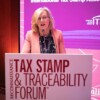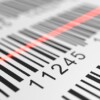
Interview with an ITSA Member – OpSec Security
6 Mar 2024 | Interviews, Press Releases
In the first of our 2024 interview series, we explore the tax stamp industry from an insider perspective, delving into its challenges, opportunities, and potential developments with International Tax Stamp Association (ITSA) members.
This month, the insights are courtesy of Steven Proudfoot, Product Director for OpSec Security’s government solutions business area. He manages authentication and traceability solutions, covering a wide span of regulated industries such as oil and fuel products, communications equipment, vehicle identity and – of course – tobacco and alcohol excise.
Q: Please would you introduce your company?
A: For around 40 years, OpSec Security has been a leading innovator in optical and materials science, as well as digital solutions. In fact, our origins were in holography, where we continue to originate and manufacture some of the world’s most secure designs, ensuring the integrity of billions of tax stamps, financial cards, and security documents each year.
Around 15 years ago, the tax stamp market evolved dramatically and OpSec was at the forefront of this change. We have developed our digital track and trace platform, OpSec Insight, and online monitoring solutions to meet new challenges and client demands.
Today, as well as protecting the products and IP of numerous global brands, we work with more than 20 government clients, often providing turnkey solutions that protect their excisable and regulated products. We continue to innovate, bringing new approaches to tackling the problems faced by governments. For example, we can now augment our core excise solutions with online monitoring that detects unauthorised or illicit product sales.
Q: What makes your company stand out?
A: The scope of services offered by OpSec to our government clients is one of the widest in the sector. As well as the core elements of physical security, authentication, and traceability, OpSec also provides a range of related services. As noted, this includes online contraband takedowns of counterfeit stamps and illicit products, as well as investigative services and in-country logistical services.
We have also carried out technology transfers across commercial and state- owned clients. These innovations are only possible thanks to the expansive approach we adopt to tackling threats and the decades of experience accrued by our in-house production leaders, software developers, and commercial and implementation staff.
Q: What role does your company play in the tax stamp industry?
A: In simple terms, OpSec is one of the leading solution integrators and component providers for government tax stamp and traceability projects. We are involved, either directly or with strategic partners, in over a dozen excise tax stamp solutions globally.
OpSec has been passionate about the role of partnerships for decades. Today we work with multiple commercial, technology, and print partners to ensure we can offer the widest range of solutions, along with local services and support. This network is something we are passionate about and are looking to grow continuously.
Q: What do you think is the most interesting aspect of tax stamps and/or the industry?
A: The tax stamp sector is a true global market. Every country in the world has some level of illicit trade challenges that they need to combat. Understanding the unique regional demands of each client is always interesting, and working with our government and industry partners to support this effort is incredibly rewarding.
OpSec has supplied tax stamp solutions to some of our government clients for over 20 years and I have personally been involved in some projects for over a decade, seeing them grow and develop. Playing a role in protecting government revenues, which in-turn can be utilised to improve infrastructure and the lives of citizens, especially in developing nations, is a great motivator.
Q: What changes have you seen to the tax stamp industry during your time working in it?
A: There has been a notable movement away from basic tax stamps to stamps that not only offer optical authentication, but also act as a portal to obtain complete digital provenance for the product they have been applied to.
This growth in tracking and other digital technologies has been the major change over the last decade, and this continues to build with integrations into government e-tax systems, customs windows, and production monitoring equipment – all enabling increased automation and, ultimately, improved functionality and enforcement. More recently of course, the movement towards a global repository for tobacco traceability has introduced a new way to think about the marking of products in that particular sector, and beyond.
Q: What changes do you envisage happening within the industry in future?
A: Artificial intelligence is already being utilised within some of our programmes for reporting alerts, mobile authentication, and risk analysis. However, as in most other industries, I imagine this is just the tip of the iceberg. As this technology continues to evolve, the opportunities for improved production monitoring, logistics, and enforcement will undoubtedly continue to extend the boundaries of what is possible.
I also expect the range of sectors that governments seek to control or protect continue to expand. We have already seen our projects expand to lubricating oils, communications equipment, tyres, and much more. As tax regimes change and illicit traders seek to exploit the new regulations and controls for their own gain, a programme must be capable of responding and expanding to meet these changes.
Q: What do you see as the main challenges within the industry today?
A: The WHO FCTC Protocol is undoubtedly a key driver for the industry, with several regions deploying, or starting to deploy, programmes that adhere to its guidance to monitor the movement of tobacco products.
However, some solution aspects are not yet addressed in detail and the adoption and deployment of some elements remains open to interpretation. This includes components such as physical stamps, unique identifier formats, and production monitoring equipment, as well as the required level of independence necessary to be considered compliant with the FCTC Protocol.
Some government clients have expressed these concerns, often stating there is a lack of clarity on what they are expected to achieve. I believe this situation is one of the reasons why some countries have not yet acted upon the Protocol or have missed the original deadline set out for compliance.
Second, while open and clear communication with the excisable industry is vital for a tax stamp project to be successful, there are some regions where the industry has significant lobbying power. The result of this has seen project delays that ultimately put government excise revenues at risk. A key challenge for government stakeholders is to ensure the strong and uncompromising development and publication of legislation to enable effective implementation, management, and enforcement of tax stamp related projects.
Q: How do you see the synergy between physical and digital features contributing to the efficacy of tax stamp programmes?
A: The most effective approach involves combining the strengths of these two crucial elements: integrating secure and encrypted digital identifiers into physical stamps that provide proven optical and material security in a multi- layered manner.
However, as the range of products requiring marking expands, achieving this ideal combination often poses challenges. Considerations such as production environments, line speeds and the associated risk of illicit trade must be carefully considered.
The advancement of direct marking on specific products, such as beer, would be a typical example. In a well-designed programme, the collaboration between physical and digital features must exhibit flexibility across diverse product sectors. This ensures the programme’s practicality while maintaining an unwavering commitment to the level of enforcement and traceability required by government staff and the general public.
Q: Why do you think the development of standards is important for the industry?
A: I think there are two major reasons why standards and their development are important. First, to ensure the quality, security, and reliability of solution providers in the sector. Providers with key ISO certifications such as 14298, 14001, 9001 and 27001 can help assure governments they are selecting solutions that are backed up with suitable security and processes in place.
Second, developing standards specific to our sector that support industry-wide goals such as global interoperability will ensure providers have clear guidance to develop new technologies. It is vital of course that all stakeholders in our industry can input to any new standards and agree with these proposed best practices, which will take time and effort.







